Does your empty nesting box have you scratching your head and wondering, “do American Bresse hens lay eggs in the winter?” If your ladies are not laying as they were, let’s take a look at some of the factors that influence egg production and see what is really going on. Relax, you’re a homesteader. You are a problem-solver.In the heart of every homesteader beats a desire for self-sufficiency, a yearning to connect with the rhythms of nature, and the deep satisfaction of providing for one’s family straight from the land.
As winter’s chill descends upon homesteads across the nation, from the frosty landscapes of the Midwest to the milder climes of the heart of the Deep South where I am located, a common question echoes through the barnyards: “Will my hens keep laying?” For many, the golden promise of an American Bresse hen is year-round excellence, but does this revered breed truly deliver fresh eggs even when the days grow short and cold?
Today, we’re cracking open the truth about American Bresse winter laying habits. We’ll dive deep into the factors that influence egg production during the colder months, exploring why your nest boxes might go empty and, more importantly, what you can do to encourage your flock to keep those delicious, farm-fresh eggs coming. Get ready to uncover the secrets to consistent winter egg production and boost your homestead’s resilience!
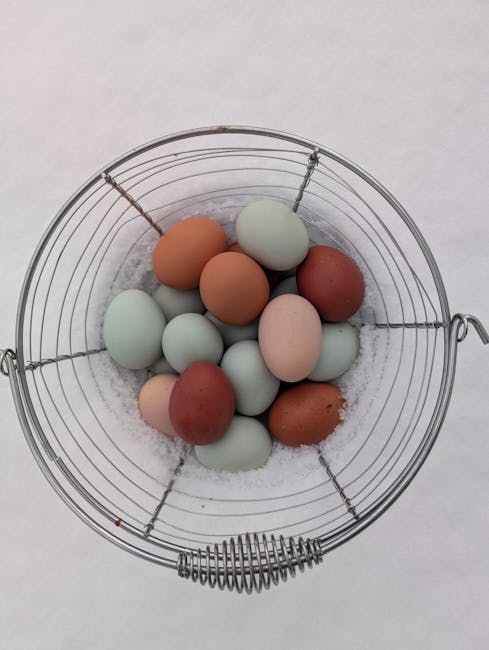
The American Bresse Advantage: Built for Performance?
In case you haven’t yet heard, the American Bresse chicken (formerly known as French Bresse) is renowned for its dual-purpose capabilities, celebrated for both its gourmet meat quality and its consistent egg production. Often described as elegant and hardy, they’ve become a favorite among homesteaders seeking a breed that performs well in various conditions. But the question of winter egg production remains a significant concern for those of us relying on our flock for fresh food year-round.
Unlike some traditional heavy layers that may completely shut down in winter, the American Bresse possesses characteristics that can make them better winter layers than many other breeds. Their robust nature and efficient metabolism often allow them to handle colder temperatures more effectively. However, it’s crucial to understand that even the most genetically inclined layers won’t perform optimally if certain environmental and care needs aren’t met. Let’s peel back the layers of what truly influences your American Bresse hen’s winter egg production.
Decoding Daylight: The Primary Winter Culprit
Perhaps the single most influential factor in your hens’ disposition to stop laying in winter is daylight length. Chickens are highly sensitive to photoperiodism – the physiological reaction of organisms to the length of day or night. Don’t we all just hate it when it feels like midnight outside but it’s only 5 o’clock?
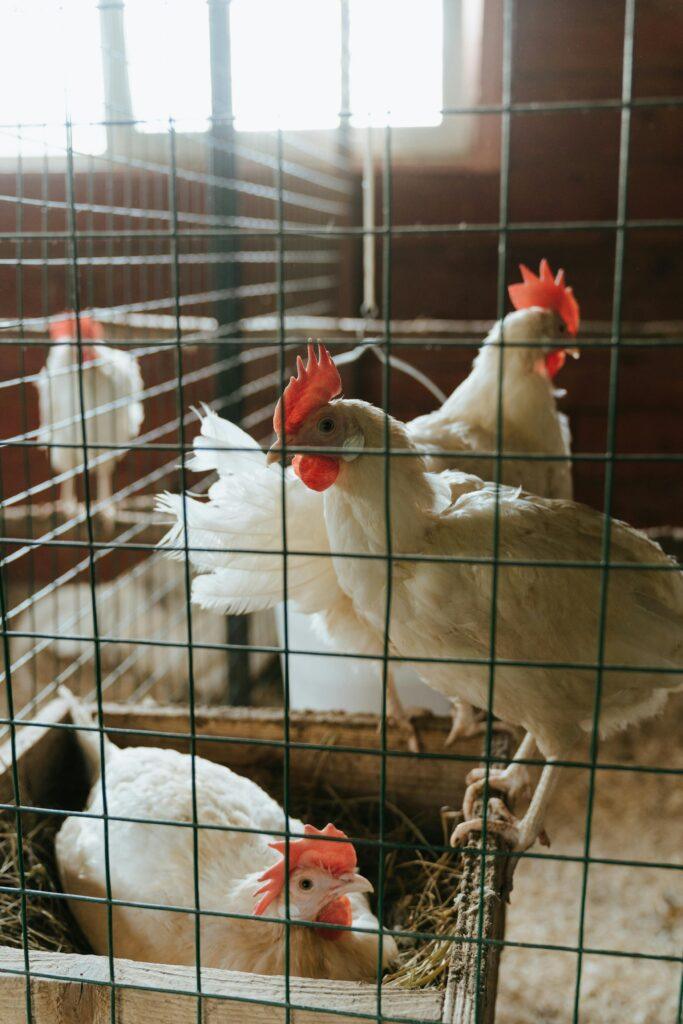
When daylight hours drop below 14 hours, a hen’s pineal gland (a tiny gland in her brain) signals her reproductive system to slow down or cease production. This is nature’s way of telling her to rest during the lean, cold months when food might be scarce, and raising chicks would be challenging.
For homesteaders in northern climates, this drop in daylight is dramatic. Even in milder areas like here in lower Alabama, winter daylight hours still fall well below the 14-hour threshold, often hovering around 10-11 hours. While you might not experience deep snow, the lack of sufficient light is often enough to trigger a laying pause.
Many homesteaders choose to provide supplemental light during winter to mitigate this, particulary those who are raising Bresse for an income. The restaurants you supply likely won’t look too favorably on a meat supply that they cannot rely on year round. While we work to transition to a more seasonal-eating mindset, it is not practical to expect that of those who are still entrenched in the cycles of the modern consumerism system.
A simple LED or incandescent bulb on a timer, set to come on in the early morning to extend the “daylight” to 14-16 hours, can often encourage continued laying. However, it’s a decision to weigh: artificial light can put extra stress on a hen’s system, potentially shortening her overall laying lifespan. For some, embracing the natural winter pause is part of sustainable living and building resilience.
Climate Matters: Keeping Your Bresse Cozy in Cold Snaps
While American Bresse chickens are generally considered cold-hardy, extreme or prolonged cold weather can certainly impact egg production. A hen that is constantly expending energy just to stay warm will divert that energy away from producing eggs.
Even in regions with milder winters like we enjoy here in Dixieland, sudden cold snaps, strong winds, or unexpected ice can stress your flock. Ensuring your coop is:
- Draft-Free but Ventilated: Good ventilation prevents moisture and ammonia buildup, but drafts will make your chickens cold. Check for drafts, especially at roosting level.
- Well-Insulated: A well-insulated coop helps retain natural warmth generated by the chickens’ bodies.
- Dry: Dampness is a chicken’s enemy in winter. Keep bedding dry and clean.
- Roosting Ready: Provide wide, sturdy roosts. Chickens prefer to roost at night, huddling together for warmth.
Monitor your flock’s comfort. If they’re huddled together constantly, or their combs/wattles show signs of frostbite (though less common in lower Alabama), they might be too cold to put energy into laying.
Nutrition: Fueling Winter Egg Production
Before keeping chickens I had never considered how egg production is an incredibly energy-intensive process for a hen. If her diet isn’t providing adequate nutrients, especially protein and calcium, her body will prioritize its own survival over laying eggs. This is particularly critical in winter when chickens might be less active and have fewer foraging opportunities.
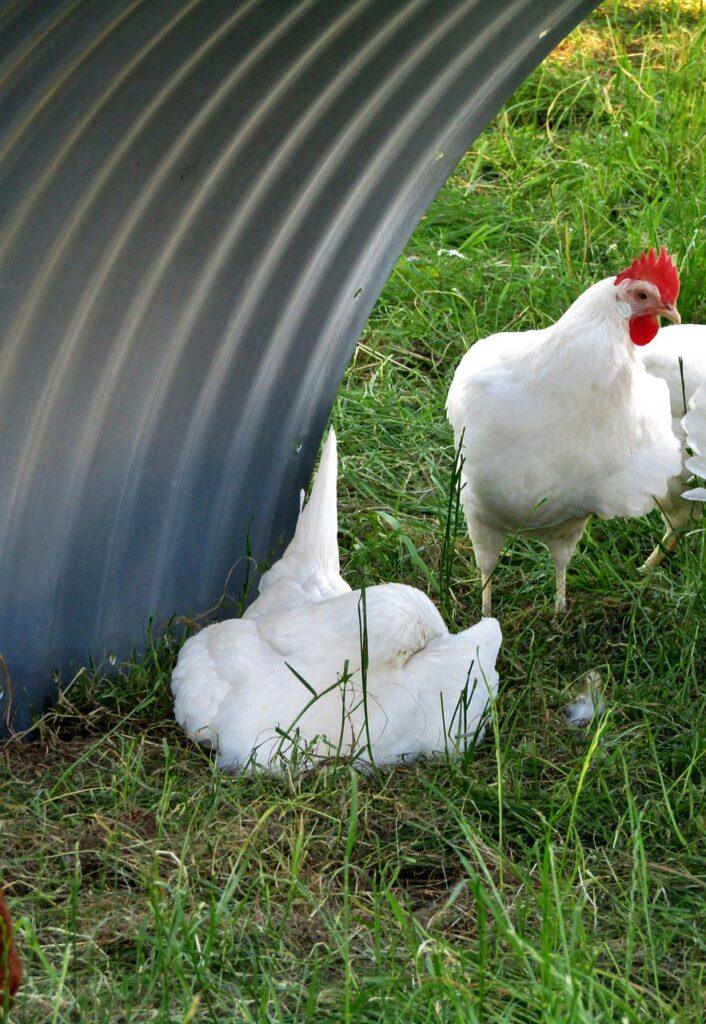
- Varied High-Protein Diet: Ensure your hens are receiving a high-quality layer feed (typically 16-18% protein). Supplementing with additional protein sources like black oil sunflower seeds (BOSS), home-raised or dried mealworms, even cooked scrambled eggs can be beneficial.
- Calcium is King: Offer a free-choice calcium supplement, such as oyster shell. Hens will self-regulate their calcium intake, which is vital for strong eggshells and preventing calcium depletion in their bodies.
- Fresh Water: Just as in summer, access to fresh, unfrozen water is non-negotiable. Dehydration can quickly halt egg production. Consider heated waterers if temperatures consistently drop below freezing.
- Smart Treats: While fun, treats should be given in moderation. Too many low-nutrient treats can fill up your hens without providing the essential building blocks for eggs. Focus on nutrient-dense options if you offer them.
Health and Wellness: The Unseen Laying Blockers
A healthy hen is a laying hen. Even if all environmental factors are perfect, underlying health issues can cause egg production to plummet. Let’s take a look at some possible issues.
The Molt: Nature’s Necessary Pause
Beyond the environmental and care factors, a hen’s natural biological cycles also play a significant role, most notably molting. Molting is the process where chickens shed their old feathers and grow new ones. This annual renewal typically occurs in late summer or fall as daylight hours begin to wane, and it’s an incredibly energy-intensive process for a hen’s body.
It seems to happen suddenly. One late fall evening you’ll go out to lock up the coop for the night and the area where your chickens forage and all around the coop will be littered with feathers. My first thought was that there had been an attack. In reality, I just hadn’t noticed the gradual loss of their feathers and a scraggly-looking flock until it hit me all at once.
All the protein and energy that would normally go into producing an egg is redirected to feather growth, which means egg production will either slow dramatically or stop completely during this period. A typical molt can last anywhere from 8 to 16 weeks, depending on the individual hen’s age, breed, and overall health.
Some hens might have a “hard” molt, shedding most of their feathers at once, while others might have a “soft” molt, losing feathers more gradually. While the timing is often triggered by decreasing daylight, stress or age can also initiate a molt at unexpected times. It’s essential to ensure your molting hens have a higher protein diet during this time to support new feather growth and help them get back to laying sooner so you’ll never have to miss your eggs for breakfast!

- Parasites & Pests: The hidden menace of parasites or even external pests like mites and lice can be a major drain on a hen’s vitality. These tiny invaders feed on blood and nutrients, weakening your birds and diverting their energy away from egg production.
- Regularly inspect your hens for signs of infestation (ruffled feathers, irritation, pale combs, visible bugs). Dusting with food-grade diatomaceous earth, using poultry dust, or employing natural remedies like cedar shavings can help keep these unwelcome guests at bay. An infested flock will rarely be a productive one, especially in the already challenging winter months.
- Stress: Chickens are creatures of habit and can be surprisingly sensitive to stress. Anything that causes anxiety or discomfort can lead to a dip in laying.
- Predation Pressure: Even if a predator doesn’t get into the coop, its mere presence nearby can be incredibly stressful. Ensure your coop is secure and predator-proof.
- Flock Dynamics: New birds, bullying within the flock, or an imbalanced hen-to-roo ratio can cause stress. Aim for a healthy hen-to-roo ratio, typically 8-10 hens per rooster, to prevent over-mating stress on the hens.
- Sudden Changes: Drastic changes in feed, coop environment, or daily routine can throw hens off their laying schedule.
- Overcrowding: Ensure your hens have ample space in the coop and run. Overcrowding leads to increased stress, bullying, and hygiene issues.
Age-Old Questions: When Are Your Hens Ready (or Done) Laying?
A hen’s age plays a significant role in her laying consistency, particularly in winter.
Too Young: Pullets (young hens) typically begin laying between 18-24 weeks, depending on the breed. If your American Bresse hens are still very young as winter approaches, they might delay their first egg or lay sporadically until spring. Their bodies are still maturing.
Too Old: Conversely, as hens age, their egg production naturally declines. Hens typically reach their peak laying in their first 1-2 years. After that, production gradually decreases. An older hen (3+ years) might stop laying entirely in winter, choosing to use her energy for warmth and maintenance rather than egg production.
Just Right: Hens in their prime laying years (1-2 years old) with proper care are your best bet for consistent American Bresse winter laying. To accomplish this, we hatch out new hens in late winter/early spring and they usually come into lay by that fall. Since they are so young and new to laying, they do not usually have an issue with molting until the following year.
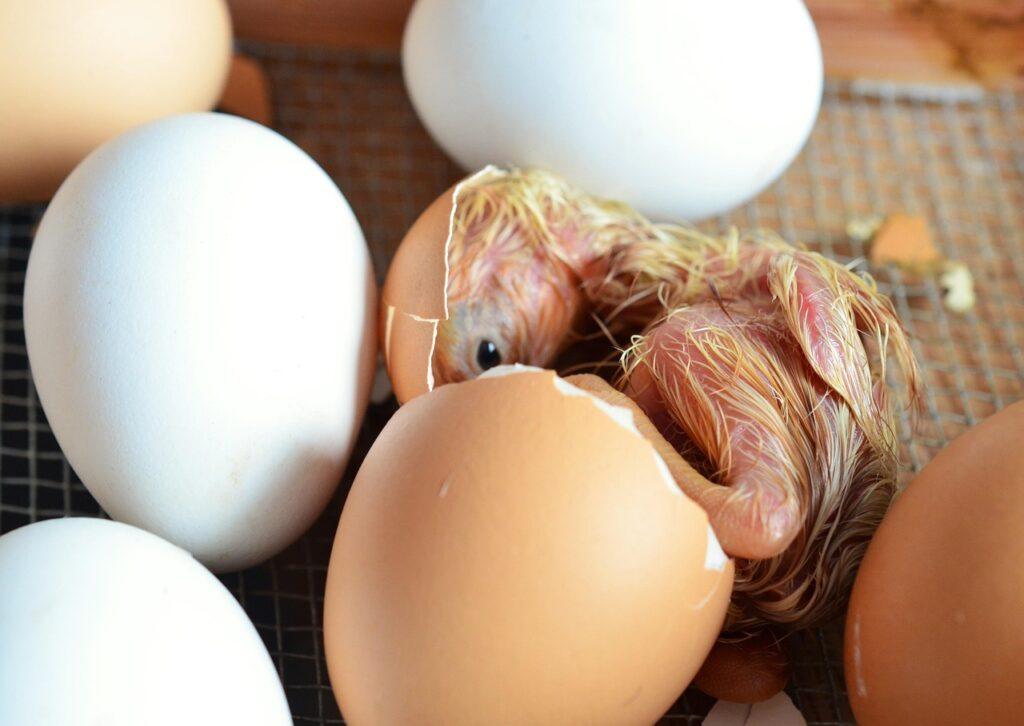
The hens that were hatched the prior year, as well as any older hens in the flock can be allowed to molt and let the younger hens take care of our egg needs for the winter. Your family size and egg-demand will determine how many hens you will need to hatch out and keep for personal use each year.
Tips for Encouraging Winter Eggs: Homesteading Resilience.
To maximize your chances of seeing those beautiful Bresse eggs even in the depths of winter, consider a holistic approach:
- Evaluate Lighting: Decide if supplemental lighting is right for your homestead philosophy. If so, introduce it gradually and consistently.
- Optimize Nutrition: Provide a high-quality layer feed year-round, increasing protein or offering supplements during colder months. Ensure constant access to oyster shell and fresh water.
- Inspect for Pests: Regularly check your hens and coop for mites, lice, and other parasites. Address any infestations promptly and naturally where possible.
- Reduce Stress: Ensure a secure, predator-proof coop. Maintain a calm environment, avoid sudden changes, and keep your hen-to-roo ratio balanced.
- Maintain Coop Comfort: Focus on dry, draft-free, and well-ventilated housing. Consider the deep litter method for added warmth.
- Observe Your Flock: Pay close attention to your hens’ behavior, comb color, and overall appearance. They’ll often give you clues about their health and comfort.
Growing Resilience, One Egg at a Time.
The dream of gathering fresh eggs from your American Bresse hens even in winter is absolutely attainable for homesteaders. While the natural instincts of poultry might tell them to pause, understanding the key factors at play – daylight, climate, nutrition, health, stress, and age – empowers you to create an environment where your flock can thrive year-round.
In places like lower Alabama, where our winters are generally milder, focusing on supplemental light (if desired) and ensuring optimal health and nutrition can often make a significant difference in American Bresse winter laying. It’s about providing the best possible care, embracing sustainable practices, and honoring the needs of your animals to build true homestead resilience.
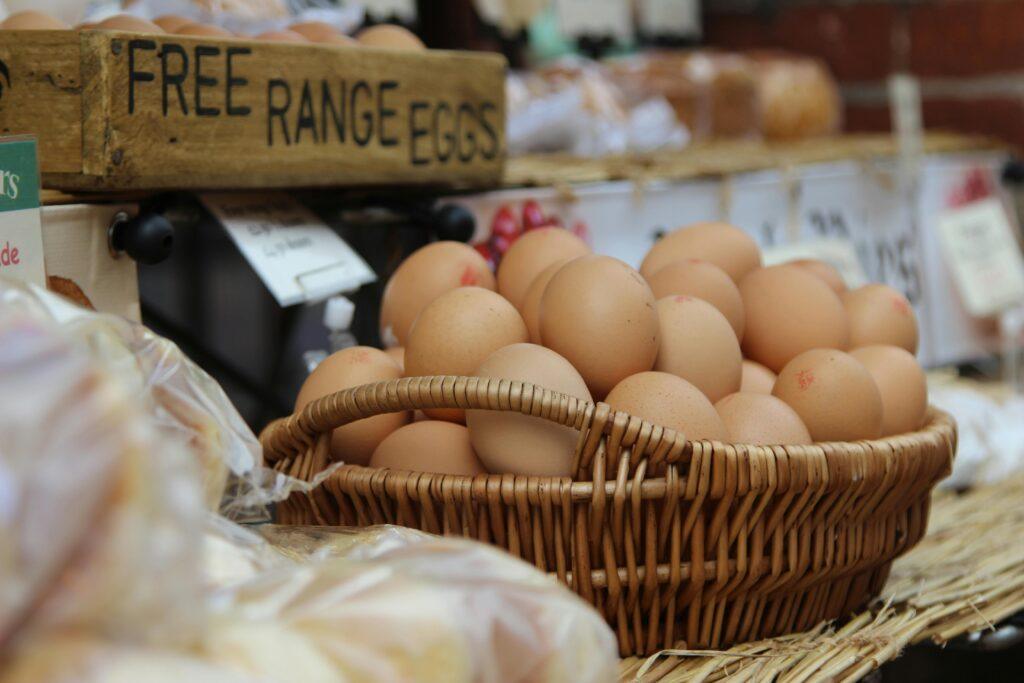
What are your experiences with winter egg production? Do you have any special tips or tricks for keeping your hens laying in the colder months? Share your insights in the comments below – we love hearing from fellow homesteaders and learning from your journeys! And if you’re eager to discover more ways to live a self-sufficient, from-scratch life, be sure to explore more articles on Dixie Living Homestead.
